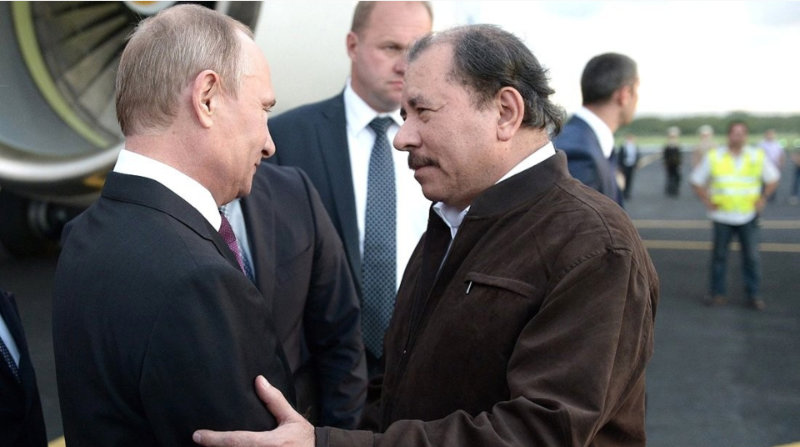Nicaragua: What Next?
June 7, 2019 | Expert Insights

Background
The victory of left-wing revolutionary Daniel Ortega’s Sandinista National Liberation Front (FSLN) in the summer of 1979 made Nicaragua an integral part of the Soviet Union’s campaign against the United States in the so-called “Third World.” By the mid-1980s, annual Soviet aid to the Latin American country stood at $250 million (1984) in military support and $253 million (1982) in economic assistance, comprising a large part of the country’s GDP. Following Moscow’s temporal withdrawal from larger geopolitics after 1991, there was a resurgence of cooperation between 2007 and 2017, turning Nicaragua into Russia’s ‘main partner and strategic ally in the Central American sub-region’.
Analysis
In the past few years, the partnership between Russia and Nicaragua has once again acquired military significance. In 2015, the Sandinista-dominated Nicaraguan parliament passed a resolution allowing Russian warships to dock in Nicaraguan ports, following earlier agreements to permit patrolling in coastal waters. The country’s military leaders already had an affinity with Russia, having used Soviet-supplied equipment fighting the contras and receiving training in the USSR itself. While Venezuela has nearly collapsed economically and Cuba has improved relations with the United States, Ortega’s government has emerged as Russia’s most stable ideological ally in the northern hemisphere.
The seriousness of the Russian government’s policy was underscored by a memorandum it signed with Nicaragua on May 8, 2018. The document is said to ‘mark a new step to boost political dialogue’ in areas such as ‘international security and cooperation with various international political platforms’. The Russian delegation also reiterated its gratitude for Managua’s support on ‘topics such as Crimea, Donbas, and the Caucuses’ which, according to them, makes Nicaragua ‘an ally of far greater importance than just within the Central American region’.
Current and former US officials have a variety of theories about Putin’s intentions in Latin America. Some worry that Russia could be pursuing ambitious spy goals, such as intercepting internet traffic in the ARCOS 1 fiber-optic cable. Speculation is rife that the new Russian satellite site on the lip of the Laguna de Nejapa crater could provide an intelligence base for the surveillance of the Americans, even though Nicaraguan officials have said it will be used for Glonass (the Russian equivalent of GPS).
Today, Russia’s collaboration with Nicaragua is at its highest point since the collapse of the Soviet Union, extending itself into the civil sector (in the form of the $50 billion Nicaraguan Canal) as well as providing security and diplomatic support. The defense ties between the two nations mean that Russia has a key ally in the strategic area, near the Panama Canal and the Caribbean Sea. The ongoing internal crisis in Nicaragua, the escalation of the dispute with the US, and the global repositioning of Russia suggests that these ties will be further reinforced in the near future.
Assessment
Our assessment is that in Latin America, President Vladimir Putin will primarily rely on Venezuela, Cuba and Nicaragua, with the latter assuming the pivotal role. This is due to Moscow’s far-reaching interest in building the Nicaraguan Canal as a hedge against the Panama Canal.
We feel that Russia’s activities in the region are part of the Kremlin’s expansionist foreign policy intended to extend its global footprint. In the last decade, Moscow has intensified its interest in Latin America, which might be construed as a retaliation to US ‘infringement’ on Russia’s sphere of influence. We believe that having lost much of its influence over Cuba since the culmination of the Cold War, Russia now perceives Nicaragua as its prime regional ally.
Spy games and Washington-Moscow power struggles are not new as the Soviet Union and Cuba provided soldiers and funding to help the government of Daniel Ortega overthrow the US-backed Anastasia Somoza in 1979. Russia has made significant inroads into Latin America by selling billions of dollars in weapons to Venezuela and by the use of Russian helicopters in Peru, Argentina and Ecuador. We suspect that Nicaragua can also provide a beachhead for Russia to expand its intelligence capabilities and election-meddling, close to the United States.








Comments